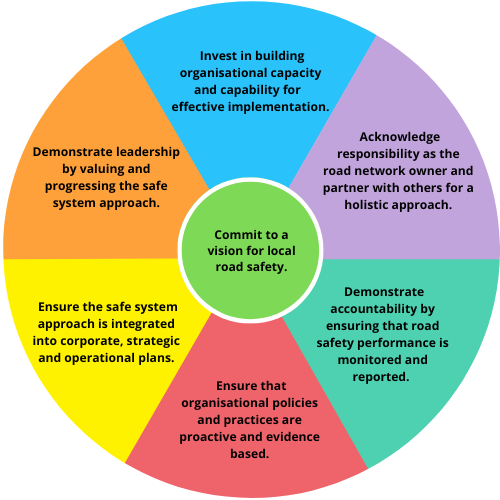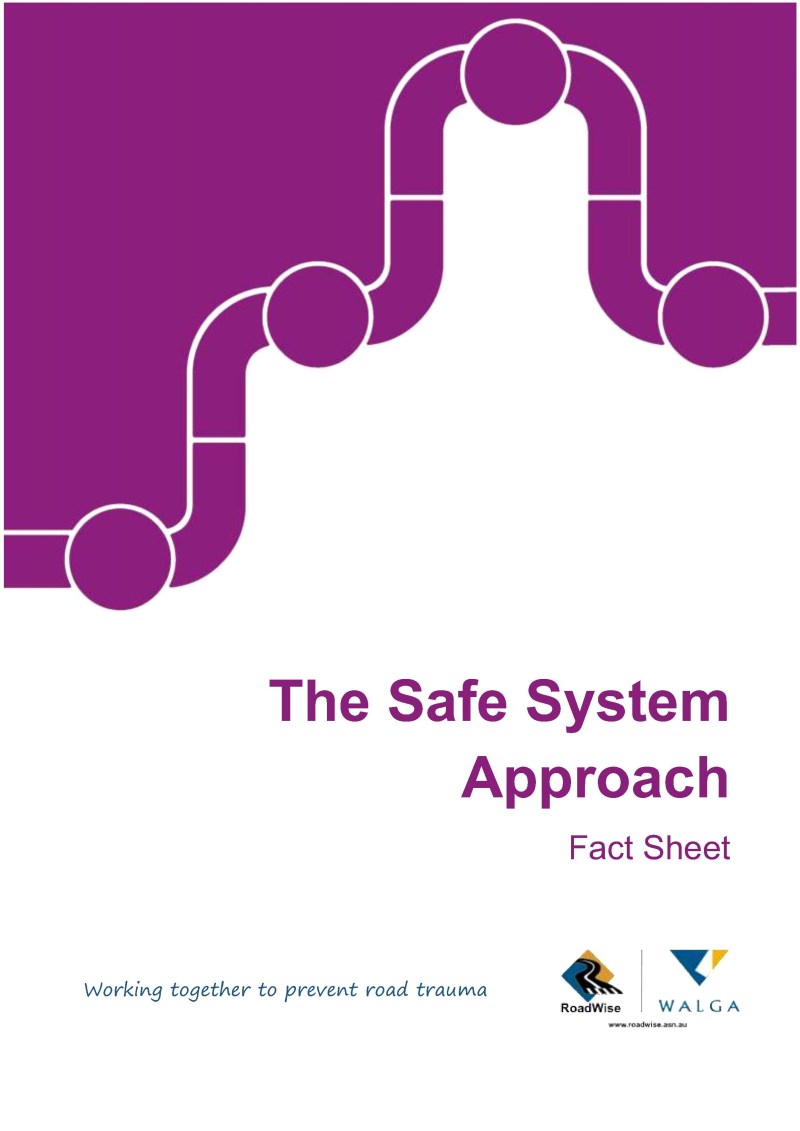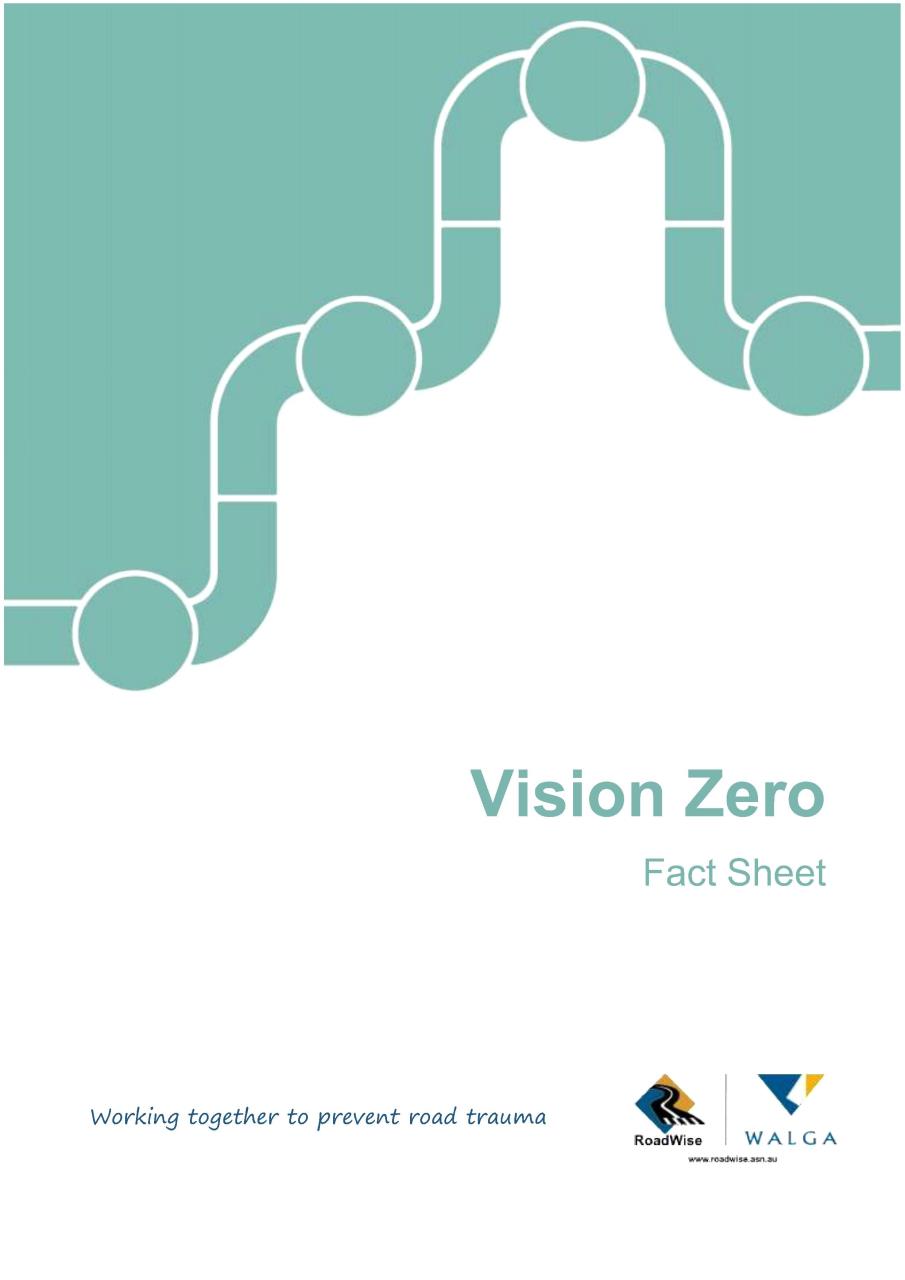Safe System Approach to Road Safety
The Safe System
The safe system approach acknowledges that the human body is vulnerable and needs protecting.
The principles of a safe system include:
- The limits of human performance: we all make mistakes and we all need to acknowledge the limits of our capabilities.
- The physical limits of human tolerance to violent forces: we are physically vulnerable when involved in a traffic crash.
- Shared responsibility: this means all of us take an individual and shared role in road safety.
- A forgiving road system: so that when crashes do happen, deaths can be avoided and injuries minimised.
- Increased use of public transport.
Creating a safe system depends heavily on understanding and implementing these principles. The focus is on protecting people so that if they are involved in a crash, they won’t be killed or seriously injured, no matter how they travel (walk, drive, ride or cycle).
Importantly, the safe system approach changes the focus from blaming those who use the roads to viewing the road transport system as a whole, where the responsibility for reducing risk is shared by road users and those who design, maintain and operate all parts of the road transport system.
This approach does not ignore risk taking behaviour, but acknowledges human fallibility and the need for greater allowances for human error.
Planning and developing a safe system means looking beyond the standards and towards systematically planning and designing a sustainable and inherently safe road and transport system for all road users.
Local Government and the Safe System
As system designers within the safe system framework, Local Governments have a strategic and operational road safety role as road managers, planning authorities and fleet managers, in addition to their community development and leadership roles.
Local Governments are crucial partners in the translation of safe system principles into practice, and WALGA is in a strong position to positively influence and work with the sector to build support and local capacity that contributes to the collective road safety effort.
Safe System Guiding Principles
WALGA RoadWise has developed the Road Safety Governing Principles for Local Governments as a resource for Local Governments to use as a framework to guide and support road safety management.
Road safety governance refers to the suite of processes, systems, roles and responsibilities by which an organisation is directed, controlled and held to account with regards to road safety. Each of the governing principles provide guidance, direction and context for Local Governments to formulate policies and practices that are proactive and evidence-based to ultimately improve road safety outcomes consistent with international best practice.
An example of road safety governance may include an assessment of the risk associated with travelling on the Shires roads in the Shires Asset Management Plan or Infrastructure Risk Management Plan or putting in place a road safety management system by adopting a Council wide Road Traffic Safety Policy.
For further information, download a copy of the Road Safety Governing Principles for Local Governments fact sheet from the Resources section of this website or contact your Regional Road Safety Advisor.

Safe System Fact Sheets
Two fact sheets are available for download which explore both Vision Zero and the safe system approach to road safety. Both resources can be downloaded from Resources section of this website.


How can your Local Government get Involved?
For more information about the safe system approach and how your Local Government can integrate safe system principles into the way the local road network is managed, contact your Regional Road Safety Advisor.